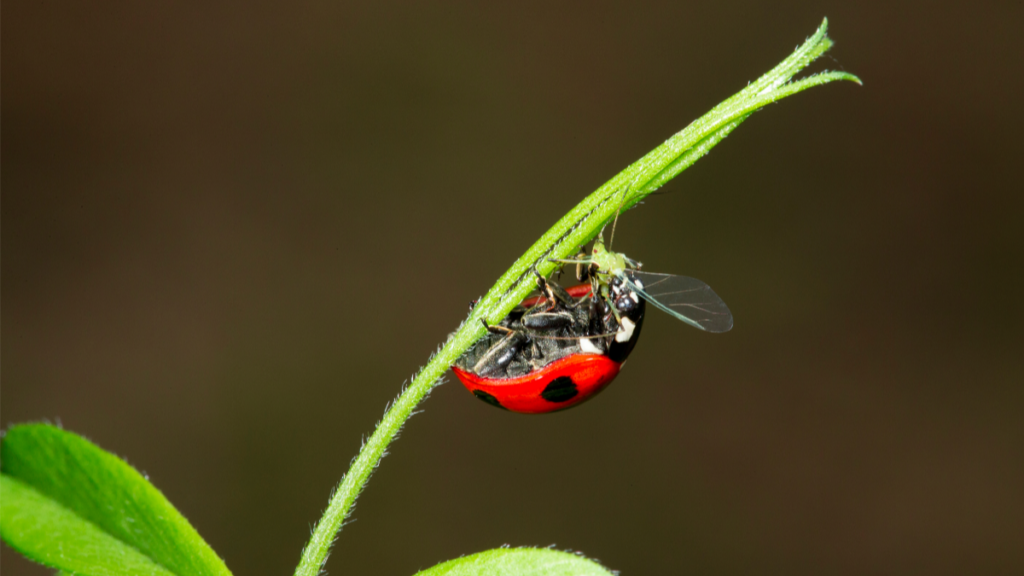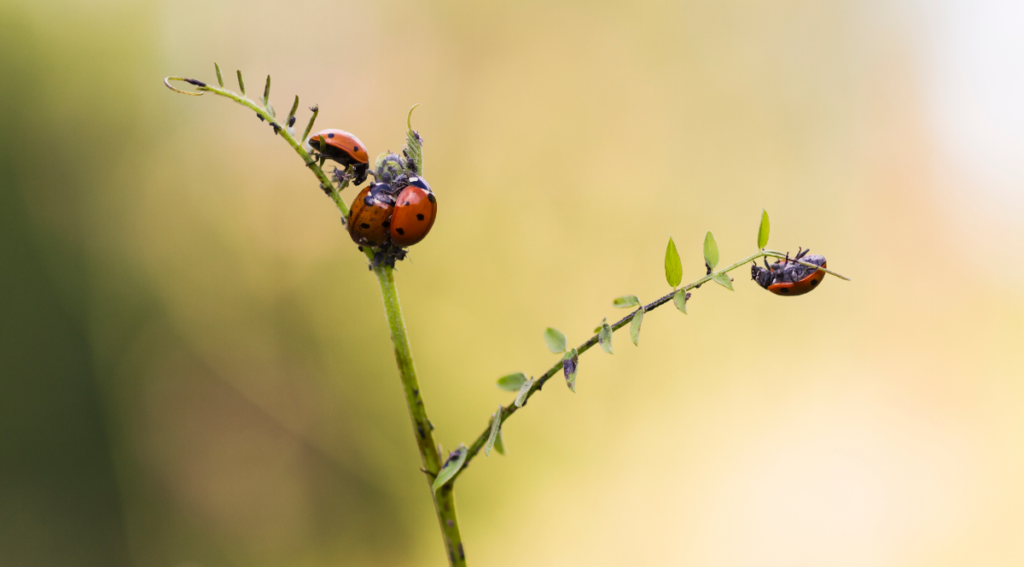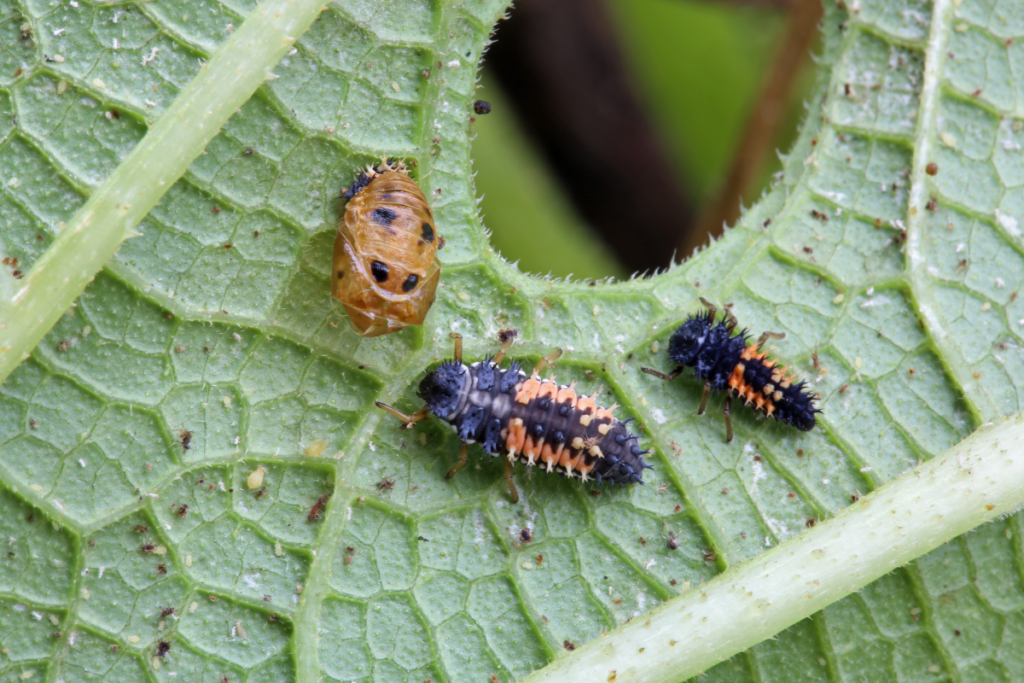Welcome back to the Lab!
In response to our recent series on classroom insects, we received a question regarding yet another type of insect that is popular for its use in gardens. The insect, like the praying mantis, is available for purchase at most nurseries and often touted as a beneficial alternative to pesticide use. I nearly fell out of my chair when I read the question. Ladybugs! How could I forget about ladybugs?
Ladybugs (or lady beetles) are predaceous members of the beetle family, Coccinelidae. Like the monarch butterfly, ladybugs are an insect icon, and extremely popular amongst kids and adults alike. Ladybugs are less often used for classroom studies; they’re usually only available for purchase as adults, so students aren’t able to observe their life stages, and they can be trickier to care for than other popular insect pets. Take it from someone who grew up in a house that would get infested with them every year: They smell. Bad. For the most part, ladybugs, like the praying mantis, are purchased for their predatory capabilities, feeding on plant pests like aphids and scale bugs.
Unfortunately, like other insects in our classroom series, I personally do not condone the release of ladybugs in gardens for many of the same reasons we discussed in previous issues.

The most easily available ladybug species for purchase is the convergent lady beetle. These beetles are wild-harvested in the winter at their overwintering sites in the Sierra Nevada and shipped nationwide. While these beetles are considered native, removing them from one location en masse and releasing them elsewhere may introduce disease and increase food competition for native predators, including other ladybugs. Since the 1980’s the nine-spotted ladybug (Coccinella novemnotata) has been eradicated from most of its native range. Once the most common ladybug in North America, the nine-spotted ladybug is now considered rare, along with the two-spot ladybug (Adalia bipunctata). While these species face competition from non-native species, (like the Asian lady beetle Harmonia axyridis and the seven-spot ladybird Coccinella septempunctata), increased numbers of the convergent lady beetle have likely led to their decline as well.

Along with outcompeting other native species, the mass release of ladybugs could lead to the spread of disease and parasitoid wasps. While they are not typically reared in a commercial setting like monarchs, keeping ladybugs (or any animal) in confined quarters for a period time (such as a small shipping container) will lead to rapid disease transmission and ultimately increased prevalence in the wild.
Not to mention, there’s no substantial evidence that releasing ladybugs actually does anything to help your garden. The convergent lady beetle is usually collected from overwintering sites, and once the beetle emerges from its overwintering state, it will migrate. Put simply, those ladybugs won’t stick around for very long.

Like our previous issues, this is not meant to discourage anyone who has an interest in sustainable gardening or a curious fascination with nature. If you want to watch the development of a ladybug, find a larva in the wild! Ladybugs tend to lay their eggs on plants already infested with aphids so their offspring will have an ample food source at the ready. Take a cutting and watch the ladybug grow, and when it has reached adulthood, release it in the same area it was found. If you have an aphid problem, try finding a ladybug or three in your neighborhood and transferring them. Many of the rules outlined for monarch release apply here. I simply don’t condone the commercial rearing/capture and release of any insect en masse.
I love insects. I think they are excellent teaching tools and a great way to introduce kids (and adults!) to science. I love watching them, rearing them, and most importantly, conserving them. I will never discourage someone who is interested in either watching an insect grow or searching for ways to keep a healthy, pesticide-free garden. I only ask that we do so responsibly.
Until next time, thanks for visiting the lab!
Bug Wrangler Brenna
brenna@missoulabutterflyhouse.org
Want to revisit a previous Notes from the Lab issue? Check out our archive! Do you want to request a subject for an upcoming issue? Email me at the address above and put “Notes from the Lab” in the subject line.